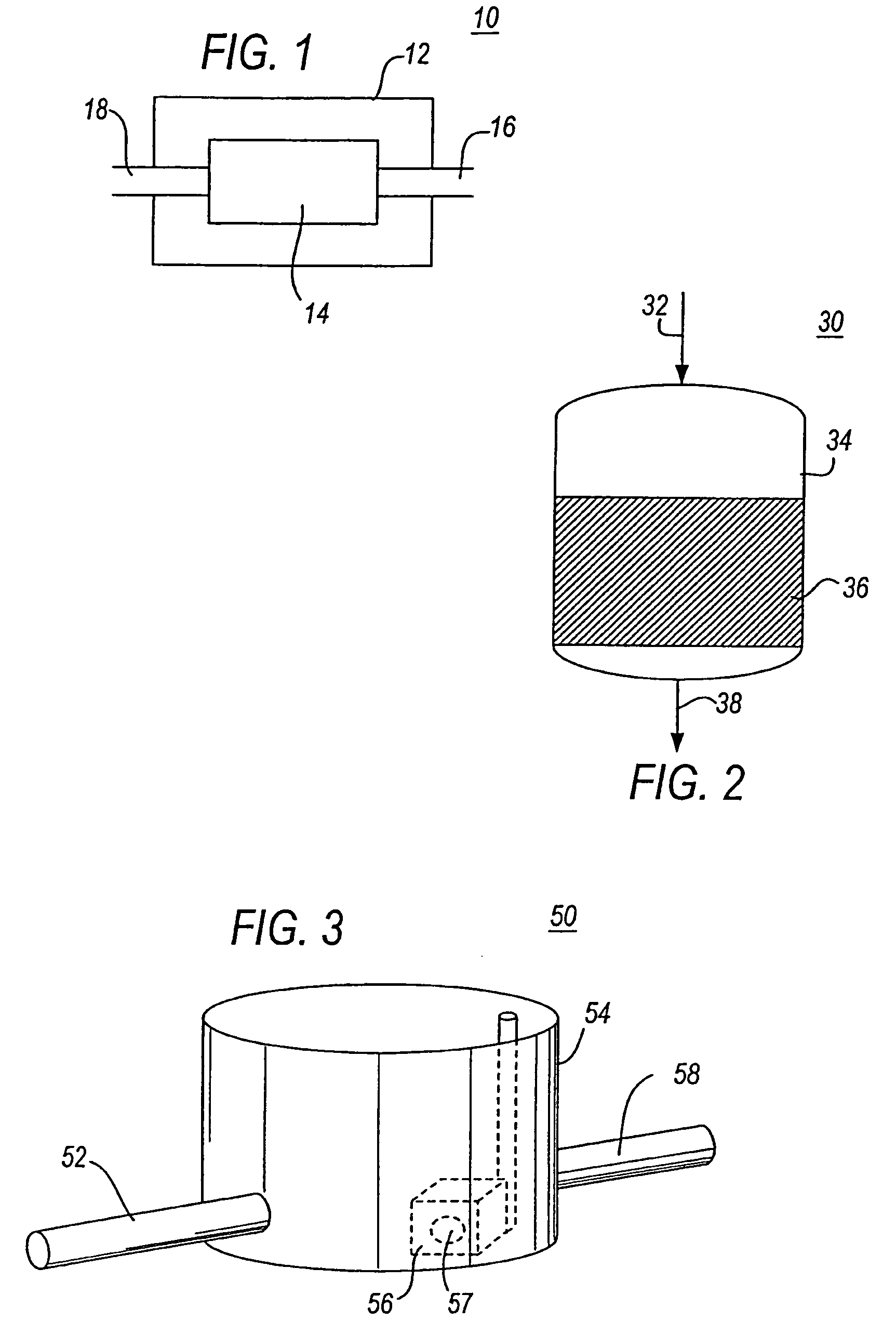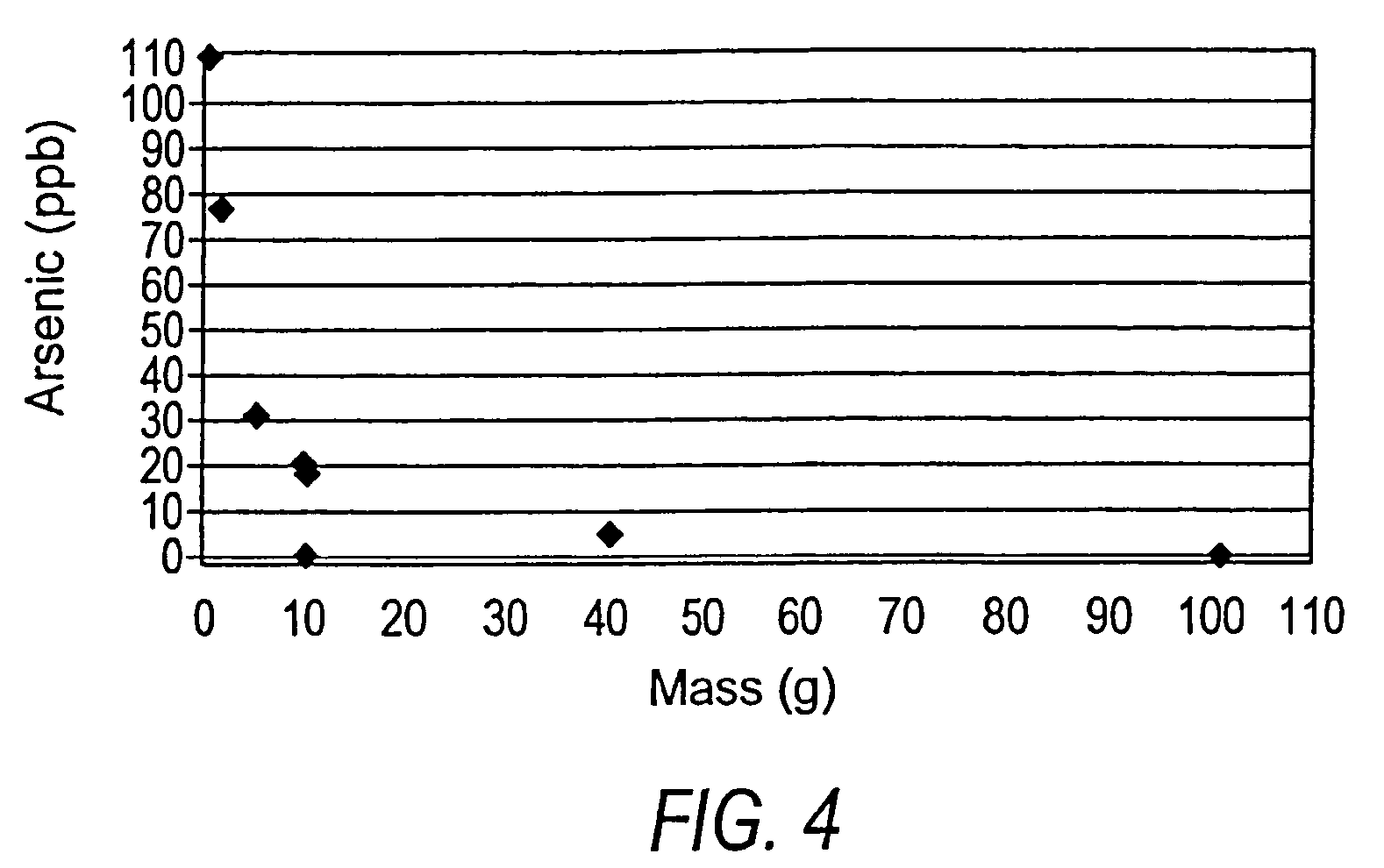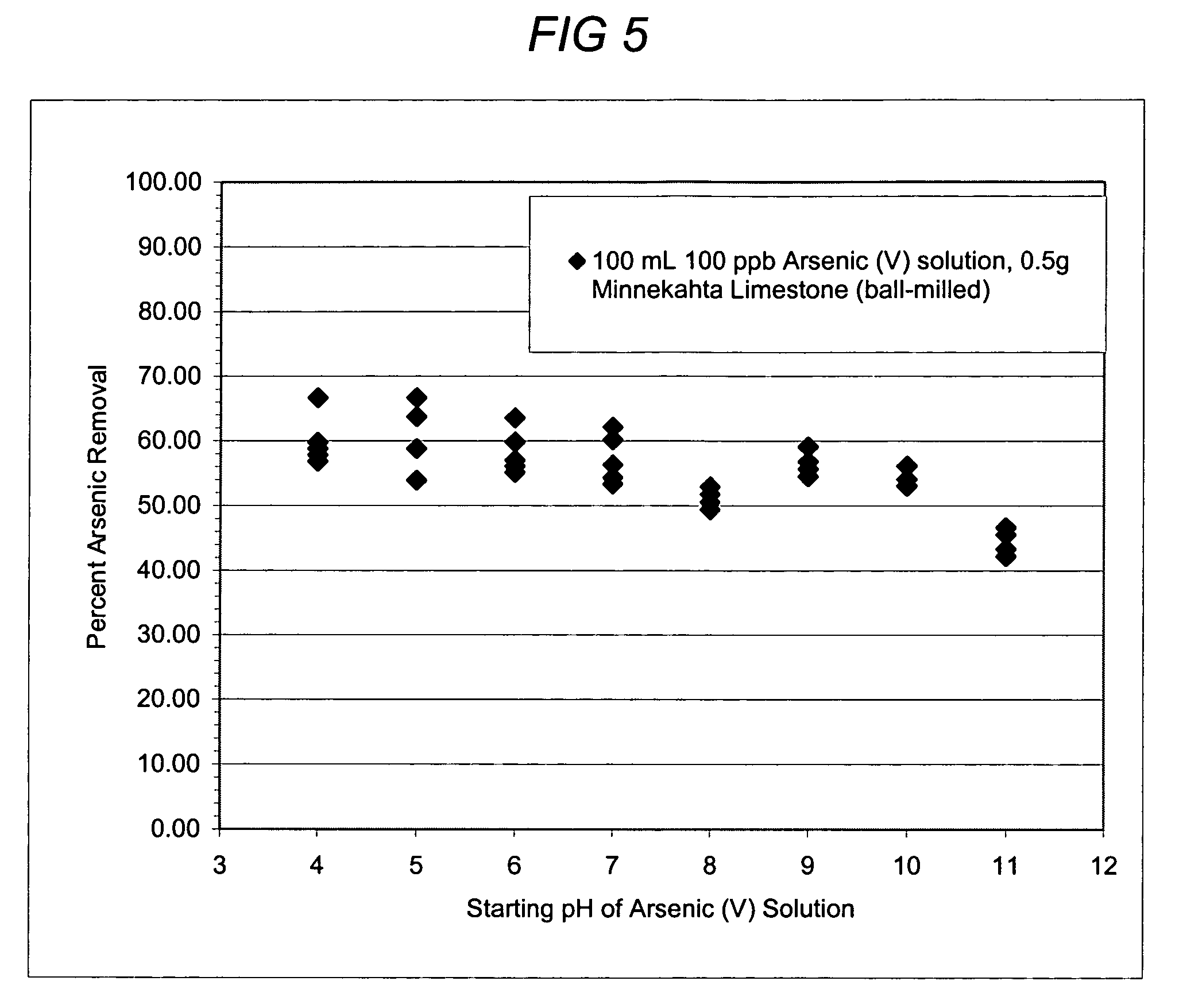Method and composition to reduce the amounts of arsenic in water
a technology of arsenic and water, applied in the direction of water/sewage treatment by ion exchange, nuclear engineering, other chemical processes, etc., can solve the problems of reducing arsenic levels, requiring substantial technical equipment and trained personnel, and reducing current arsenic remediation technologies. achieve the effect of facilitating application, and enhancing arsenic removal efficiency
- Summary
- Abstract
- Description
- Claims
- Application Information
AI Technical Summary
Benefits of technology
Problems solved by technology
Method used
Image
Examples
examples
[0061]The efficiency of an arsenic removal medium of the present invention is generally evaluated using either batch or column experiments. Batch experiments were conducted using Minnekahta Limestone as the primary limestone source. Other limestone units and additives to improve efficiency were also tested as appropriate. The limestone was crushed using a roller crusher and then sieved to various size ranges. Samples of the limestone adsorbent were placed in labeled round-bottomed flasks. Samples were mixed with 100 mL of varying arsenic solution concentrations (depending on the experiment). Arsenic solutions were pH-balanced to a pH of 8 prior to mixing with the material sample. In addition, batch tests included a blank sample of 100 mL deionized water rather than arsenic solution. Sample flasks were secured to a wrist shaker and agitated for 48 hours unless otherwise stated in the experiment description. After mixing, the samples were filtered with a 0.45 μm filter. The samples we...
example i
Batch Study of Arsenic Removal with Limestone
[0063]A batch experiment was conducted with 100 mL water containing 109 parts per billion arsenic. Limestone in the form of 5 to 7 millimeter grain size was added in small increments to separate flasks, each containing 100 mL of water at 109 parts per billion arsenic. The flasks were agitated for 48 hours and the final arsenic concentration was measured. The results are shown in FIG. 4, which indicates a marked reduction in arsenic concentrations (to 5 parts per billion or less) with relatively small amounts of limestone (40 to 100 grams).
[0064]In this batch experiment, limestone in all of the grain sizes tested, ranging from 0.001 mm to 7 mm in diameter, reduced arsenic concentrations from greater than 100 parts per billion to less than 5 parts per billion. In general, the arsenic-removal process in these experiments was more efficient with smaller grain sizes of limestone and most efficient with the smallest grain sizes tested. This exp...
example ii
Batch Study of Arsenic Removal with Limestone
pH Effect
[0065]A series of batch tests were done to confirm that pH has a limited influence over arsenic removal by limestone. In each test, 0.5 grams of Minnekahta limestone of ball-milled size was agitated with 100 mL water containing 100 ppb arsenic for 48 hours at varying initial pH values. The grain size of the limestone was 1-2 mm. The results are shown in FIG. 5, which indicates a reduction of the arsenic concentration to approximately 10 parts per billion or less throughout the pH range tested. These experiments demonstrate that the present invention effectively reduces the amounts of arsenic in water throughout a relatively wide variance of pH, including the common, naturally occurring pH range of water. No other current available arsenic remediation technology works uniformly over this pH range without an additional pH adjustment treatment.
PUM
| Property | Measurement | Unit |
|---|---|---|
| specific surface area | aaaaa | aaaaa |
| particle size diameter | aaaaa | aaaaa |
| particle size diameter | aaaaa | aaaaa |
Abstract
Description
Claims
Application Information
 Login to View More
Login to View More - R&D
- Intellectual Property
- Life Sciences
- Materials
- Tech Scout
- Unparalleled Data Quality
- Higher Quality Content
- 60% Fewer Hallucinations
Browse by: Latest US Patents, China's latest patents, Technical Efficacy Thesaurus, Application Domain, Technology Topic, Popular Technical Reports.
© 2025 PatSnap. All rights reserved.Legal|Privacy policy|Modern Slavery Act Transparency Statement|Sitemap|About US| Contact US: help@patsnap.com



